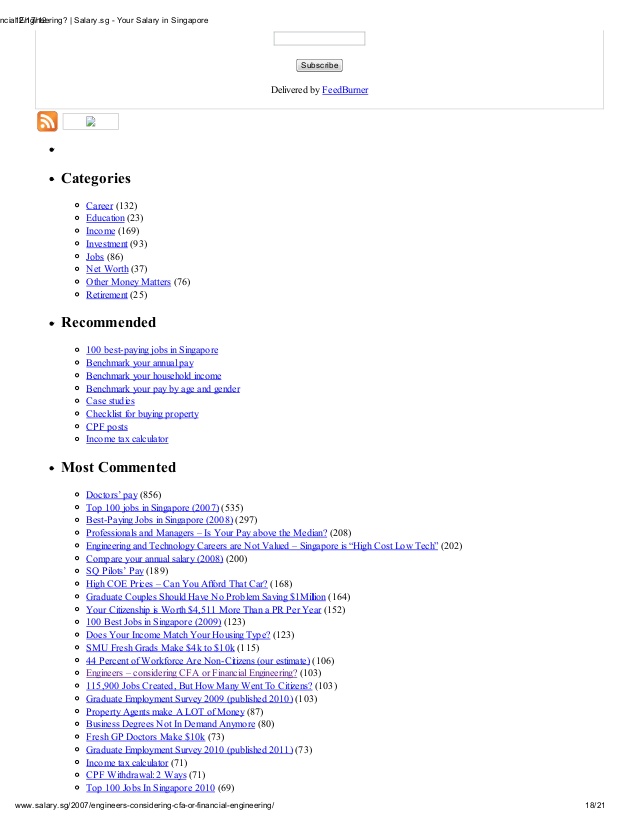Contents
In this case we speak of pecuniary economies, to spotlight the fact that nothing adjustments from the “physical” perspective of the returns to scale. Furthermore, supply contracts entail fixed prices which lead to decreasing average prices if the dimensions of production increases. Internal economies of scale are firm-specific, or caused internally, while external economies of scale occur based on larger changes outside of the firm.
Another sort occurs when companies purchase in bulk and obtain discounts for their massive purchases or a decrease cost per unit of enter. Cuts in administrative prices may cause marginal productivity to decline, leading to economies of scale. Economies of scale exist when increase in output is expected to end in a decrease in unit value while maintaining the enter prices fixed.
The demarcation line of economies of scale is obvious – when a enterprise sees its production prices start to inch downward, and sees gross sales rising, economies of scale are in play for that company. Typically, that is solely achieved with bigger corporations who run mass manufacturing strains on a big scale. A number of components enticed entrepreneurs there, including proximity to companies and academic establishments with their research centers and talent, financial providers and enterprise capital companies, and military bases. In addition to decrease manufacturing and operating prices, external economies of scale may also reduce a company’s variable prices per unit because of operational efficiencies and synergies.

The considerations regarding economies of scale are subsequently important, however not enough to elucidate the dimensions of the company and the market construction. It is also necessary to bear in mind the factors linked to the development of capabilities and the management of transaction prices. That means companies who can help giant numbers of new clients with their current infrastructure can considerably increase profitability as they grow. The purpose for this is that adding extra clients to an internet store costs subsequent to nothing. It has been noted that in many industrial sectors there are numerous corporations with different sizes and organizational structures, despite the presence of great economies of scale. This contradiction, between the empirical proof and the logical incompatibility between economies of scale and competitors, has been called the ‘Cournot dilemma’.
What are the types of internal economies?
In this example, the producer is passing on the cost benefit of producing a larger variety of computer processors onto firm ABC. This price advantage arises as a result of the fixed price of manufacturing the processors has the same fixed price whether or not it produces a hundred or 500 processors. Generally, when the mounted prices are coated, themarginal value of productionfor each additional computer processor decreases. Economies of scale apply to a variety of organizational and business situations and at various levels, similar to a production, plant or a whole enterprise.

Such companies must balance the economies of scale in opposition to the diseconomies of scale. For instance, a firm might be able to implement sure economies of scale in its advertising division if it elevated output. Each of these factors reduces the long term average prices of production by shifting the brief-run average whole price curve down and to the right.
With exterior economies, costs additionally might fall because of increased specialization, better coaching of employees, faster innovation, or shared provider relationships. These components are sometimes known as optimistic externalities; industry-stage unfavorable externalities are known as external diseconomies. External economies of scale occur outside of a person firm however inside the identical trade. Remember that in economics, economies of scale imply that the extra units a enterprise produces, the much less it prices to provide every unit. This is an instance of an exterior economy of scale – one that affects a whole business or sector of the economic system.
What is the difference between internal and external economies?
Learning by doing implies enhancements in the capability to perform and promotes the introduction of incremental innovations with a progressive lowering of common costs. Technical economies of scale are achieved via using giant-scale capital machines or production processes.
Conversely, external economies of scale imply exactly that – components and circumstances outside the corporate – and largely outside its control – that may impact economies of scale. If borrowing costs decline across the whole economy as a result of the government is engaged in expansionary monetary coverage, the lower rates can be captured by a number of firms. Companies can still take relatively higher or lesser benefit of exterior economies of scale. In microeconomics, economies of scale are the fee internal economies of scale are noticed at advantages that enterprises acquire as a result of their scale of operation , with cost per unit of output lowering with rising scale. Those elements could be optimistic or unfavorable industry tendencies or country-broad financial developments, like a stronger gross domestic product and resulting strong consumer demand, that can drive economies of scale. By and huge, exterior economies of scale mean that as a business sector and nation economy grows, the price of production falls, as sales rise.

However, since they distribute water to over 25 million households, it brings the average price down. However, would it be price another water firm building one other community of water pipes to compete with the existing firm? No, as a result of in the event that they only got a small share of the market, the common cost could be very high and they would exit of business. This is an instance of a natural monopoly – where the most efficient number of corporations is one. This diagram reveals that as companies increase output from Q1 to Q2, average costs fall from P1 to P2.
Internal vs. External Economies of Scale: What’s the Difference?
Both types result in declining marginal costs of production; yet, the net effect is the same. Economies of scope are totally different to economies of scale – although there is identical principle of bigger corporations benefiting from decrease common prices. Economies of scope happen when a large firm uses its present sources to diversify into related markets. The graph above plots the long-run common costs faced by a agency against its stage of output.
At the premise of economies of scale there could also be technical, statistical, organizational or related components to the degree of market control. Company ABC wants to extend its product line and remodels its manufacturing constructing to provide a variety of digital units, corresponding to laptops, tablets, and phones. Monopsony power is when a company buys so much of a product that it can reduce its per-unit costs. This forces firms to innovate, enhance theirworking capitalor remain at their present optimum level of production. For instance, if the corporate that produces the pc processors surpasses its optimum production level, the cost of every further unit might start to increase as an alternative of continuing to decrease.
- External economies of scale can also be referred to as positive external benefits of industrial expansion.
- An economy of scale is a microeconomic term that refers to factors driving production costs down while increasing the volume of output.
- But when speaking about economies of scale, the relation taken into consideration is that between the typical manufacturing cost and the dimension of scale.
- These components are sometimes known as optimistic externalities; industry-stage unfavorable externalities are known as external diseconomies.
- In business, diseconomies of scale are the options that lead to an increase in average prices as a business grows beyond a sure measurement.
External economies of scale are enterprise-enhancing factors that happen outdoors an organization however inside the same trade. Finally, network economies of scale could be achieved when the marginal costs of adding further clients are extraordinarily low or decreasing. External economies of scale happen due to bigger adjustments within the business, so when the business grows, the typical prices of business drop.
Since the cost of operating the manufacturing constructing is unfold out throughout a variety of merchandise, the average whole price of production decreases. The prices of manufacturing every electronic system in another building would be higher than just using a single manufacturing constructing to supply a number of merchandise. To produce faucet water, water firms needed to spend money on an enormous community of water pipes stretching throughout the nation. Economies of scale often have limits, such as passing the optimum design level the place prices per further unit begin to increase. Common limits embrace exceeding the close by raw material provide, such as wooden in the lumber, pulp and paper industry. A widespread restrict for a low cost per unit weight commodities is saturating the regional market, thus having to ship product uneconomic distances.
What are the advantages of external economies of scale?
These economies are as a result of presence of some useful resource or competence that isn’t totally utilized, or to the existence of specific market positions that create a differential benefit in expanding the scale of the firms. That development economies disappear once the scale measurement growth course of is accomplished. For example, a company that owns a supermarket chain benefits from an financial system of growth if, opening a new supermarket, it gets an increase in the value of the land it owns across the new supermarket. The sale of those lands to economic operators, who want to open shops near the supermarket, allows the corporate in query to make a revenue, making a profit on the revaluation of the worth of building land. Economies of scale present bigger corporations with a aggressive advantage over smaller ones, because the bigger the enterprise, the lower its per-unit prices.
Internal economies of scale are agency-particular, or caused internally, whereas exterior economies of scale happen based on larger adjustments outdoors of the agency. Both varieties lead to declining marginal costs of manufacturing; but, the web effect is identical. External economies of scale are https://1investing.in/ typically described as having an impact on the entire trade. Definition – External economies of scale happen when an entire trade grows bigger and corporations profit from decrease long-run common costs. The traditional instance of a technical inside economy of scale is Henry Ford’s assembly line.
